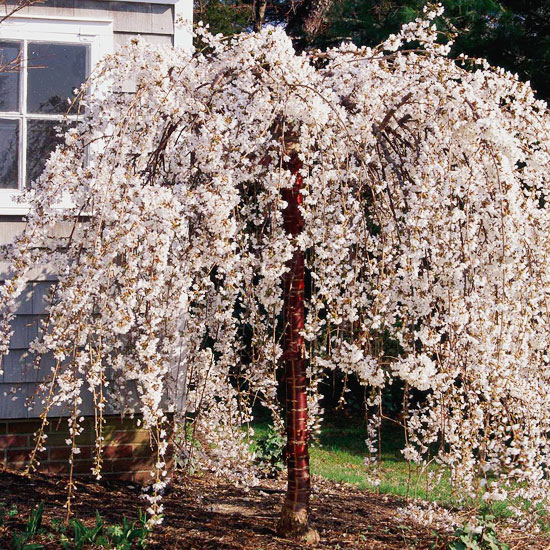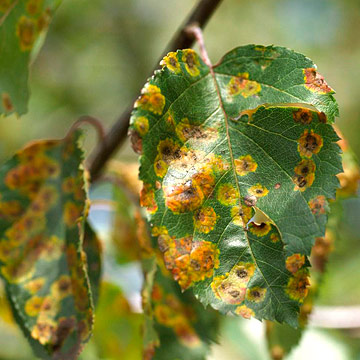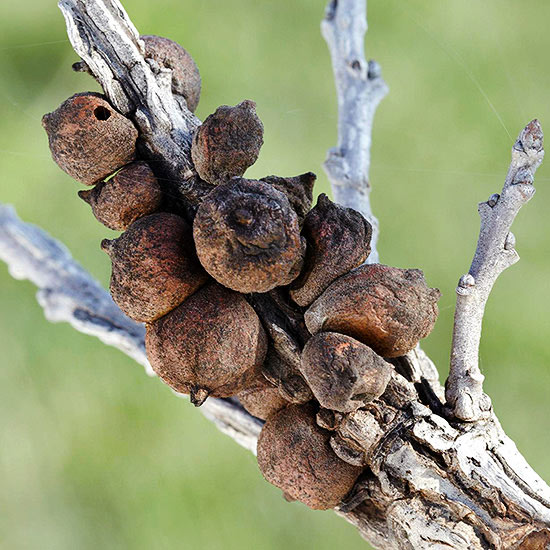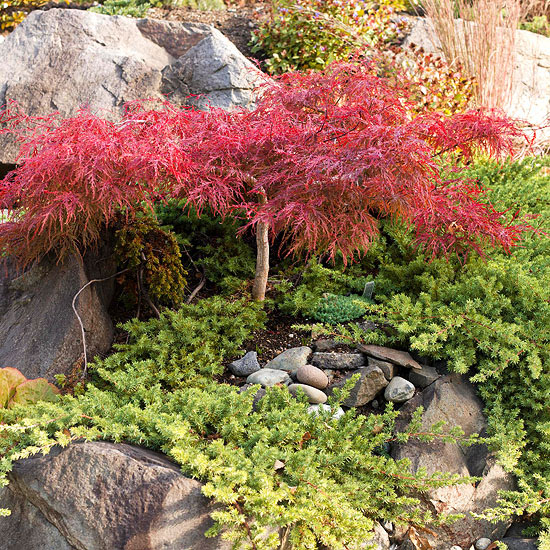






Thankfully pests rarely trouble woody plants. When insects, fungi, and assorted other pests invade trees, the plants are often struggling from environmental stress which makes them more susceptible to attack. Choosing the best tree for a planting site, good planting practices, and regular care go a long way toward preventing pests from taking hold. Learn more about choosing trees here. Here's a quick video about how to plant a tree. And finally, here are 10 great tips for keeping established trees healthy.
continue reading belowHere are common insect and disease pests categorized by the type of damage you're likely to spot on your tree. Note, pests don't behave uniformly and are often tough to identify. If you have trouble identifying the cause of damage on your tree, be sure to consult an expert. A local garden center and your state Extension Service are good places to inquire about tree disease.
 Orange spots on the leaves indicate rust. Rust is an unsightly leaf disease but it is rarely fatal.
Orange spots on the leaves indicate rust. Rust is an unsightly leaf disease but it is rarely fatal.
Entire leaf: If the entire leaf except for the midvein is eaten, examine the leaves for the presence of caterpillars, sawflies, or webworms.
Holes in flowers: Indicates insect presence. Rose flowers are regularly damaged by rose chafers, Japanese beetles, and false Japanese beetles.
Pattern feeding: Distinct notches on the leaf margin are often due to black vine weevils. Circular holes cut into the edge of the leaf are probably signs of leaf cutter bees.
Random damage: If found throughout the leaf, it is often the result of feeding by beetles, grasshoppers, or weevils.
Skeletonized leaves: Leaves have a lacy appearance when insects consume the inner green portion of the leaf, leaving the vein structure visible. Japanese beetles skeletonize leaves.
White lines on leaf: Leaf miners tunnel between the upper and lower leaf membranes creating white tunnels in their wake.
Leaf distortion: Many insects inject toxins into leaves that result in curling or puckering of leaves or other deformities that mimic the symptoms of disease. Mites are a common culprit.
White powder on leaves: This white dusty substance on leaves is powdery mildew and a sign of surface fungi.
Leaf spots: Circular lesions, with or without concentric rings, may appear and grow through leaf veins. Pimplelike fruiting bodies may appear on the diseased tissue. Most leaf spot disease is due to fungi.
Orange spots on leaves: Caused by a fungal disease called rust, this disease rarely causes permanent damage.
Root rot is the most common root damage. Caused by fungi that turn the roots black and soft, root rot is usually noticed above ground long before you realize it is lurking below ground. The earliest symptoms usually include wilting or stunting. Fungus may be present. Root rot often develops due to overly wet or overly dry conditions.
 Odd, swollen growth on the trunk or branches is called gall. When possible, remove infected branches.
Odd, swollen growth on the trunk or branches is called gall. When possible, remove infected branches.
New growth death: Blackened, curling, and dying new shoots is a sign of blight. Older shoots are less susceptible.
Sunken or swollen dead areas on the stem: Cankers are the cause of dead areas on stems and trucks. The dead area will often have a target shape. Cankers are usually associated with wounds, which serve as entrances for infection.
Swollen areas on trunk and stems: Called gall, these round or elongated swelling in the main trunk or branches can be small or large. They cause damage by preventing nutrient flow.
Prolific new growth: An odd cluster of new growth at a single site may indicate witches'-broom has invaded. Cut off the offending growth to prevent spread of the disease.
 When planted in moist, well-drained soil this Japanese maple unfurls brilliant red foliage.
When planted in moist, well-drained soil this Japanese maple unfurls brilliant red foliage.
When you spot signs of pests on your trees, follow these four tips for safely gaining the upper hand in the battle.
1. Think before you treat. Pest damage is often cosmetic. A pest creates tattered foliage or spotted leaves for a short time, but then environmental conditions change and the pest is no longer present. The plant will cast off the damaged leaves and continue to thrive. A healthy ecosystem makes this possible.
2. Plant diverse species. Pests tend to prey on particular plant groups. Plant a mix of species, and pest damage that does occur will be confined to a few plants instead of spread through the entire landscape.
3. Choose plants that are well-suited to your site. Healthy, thriving plants will naturally overcome many pest attacks.
4. More is not always better in gardening. More water, more fertilizer, and more mulch can all lead to disease and pest problems.
Copyright © www.100flowers.win Botanic Garden All Rights Reserved